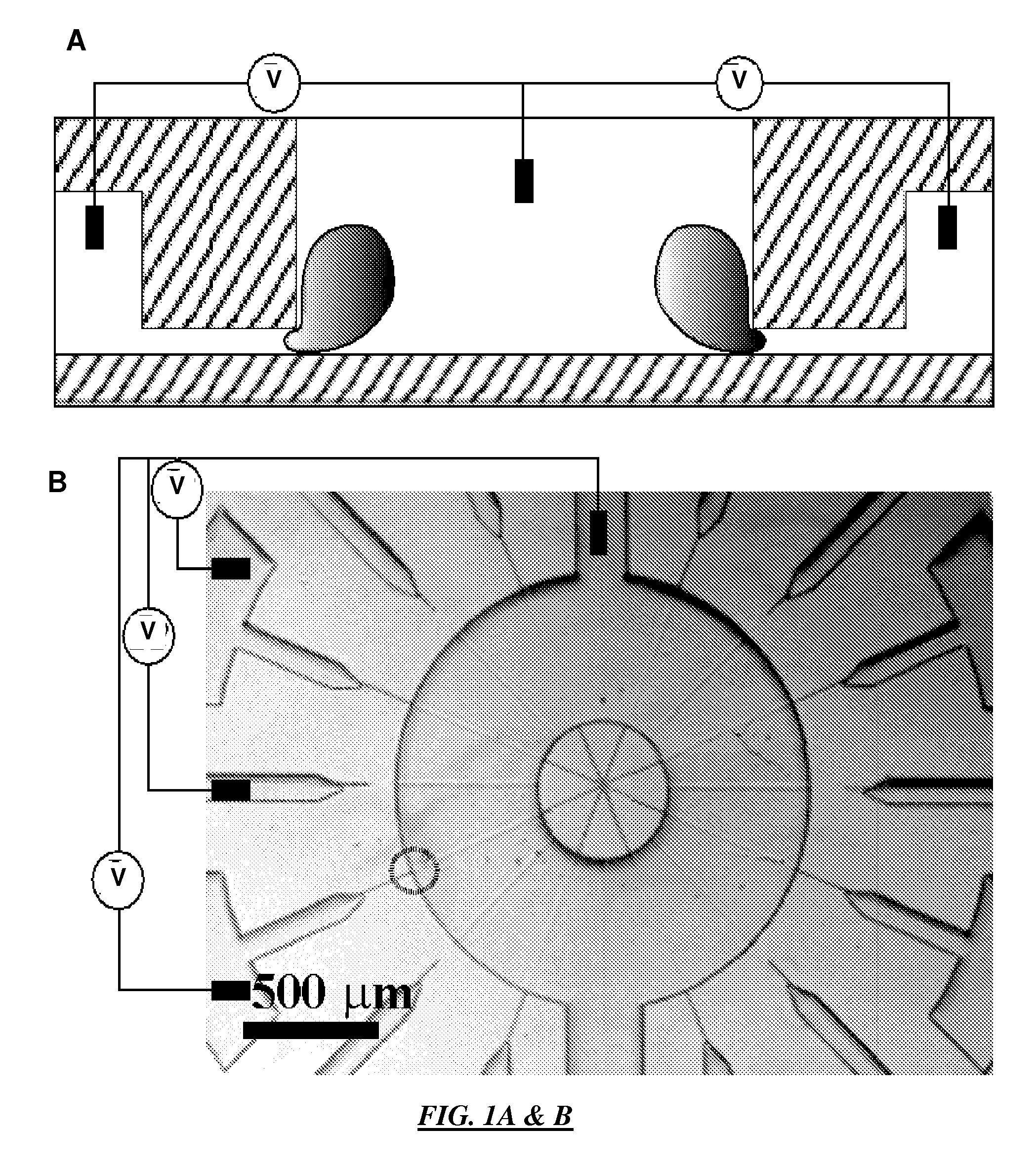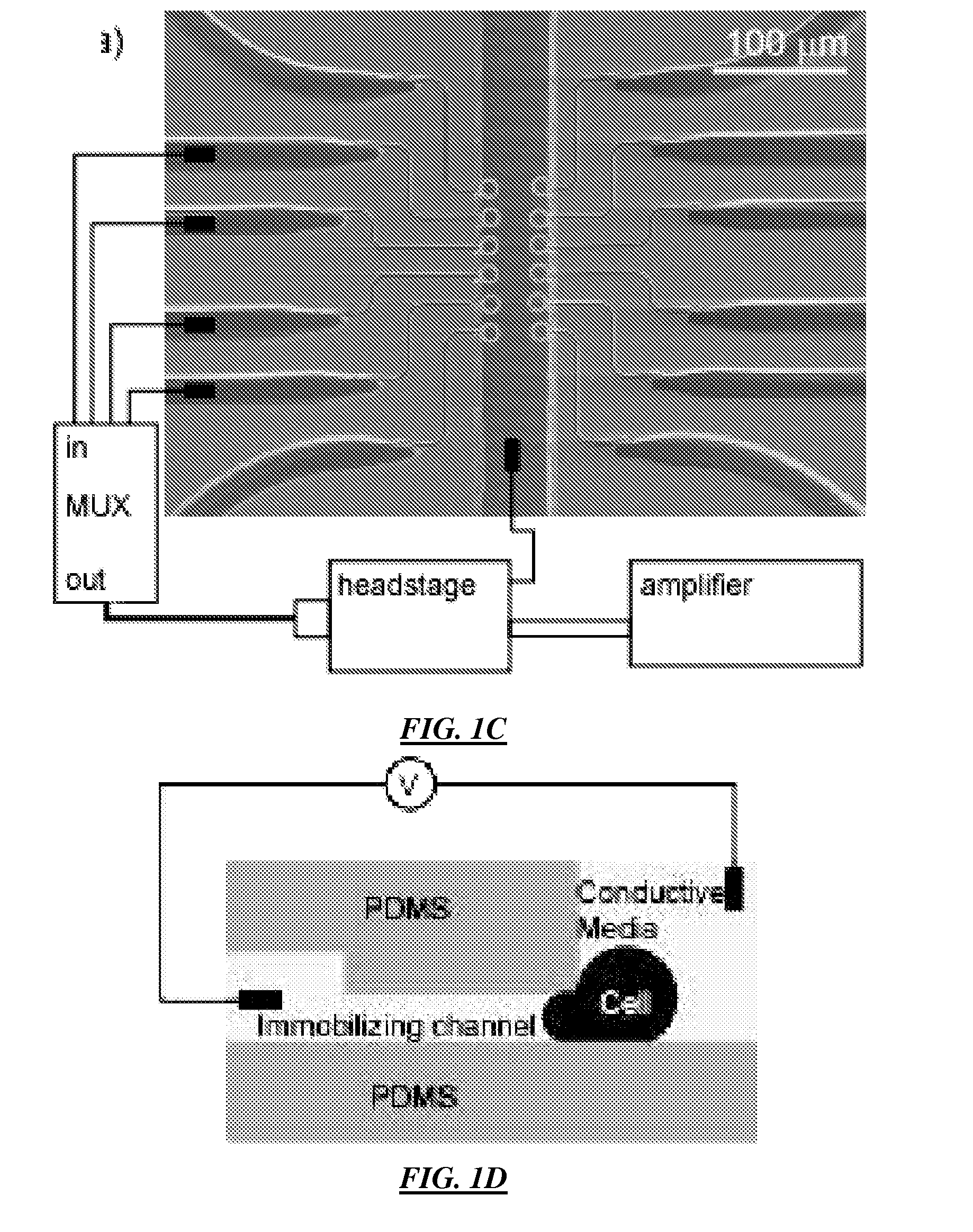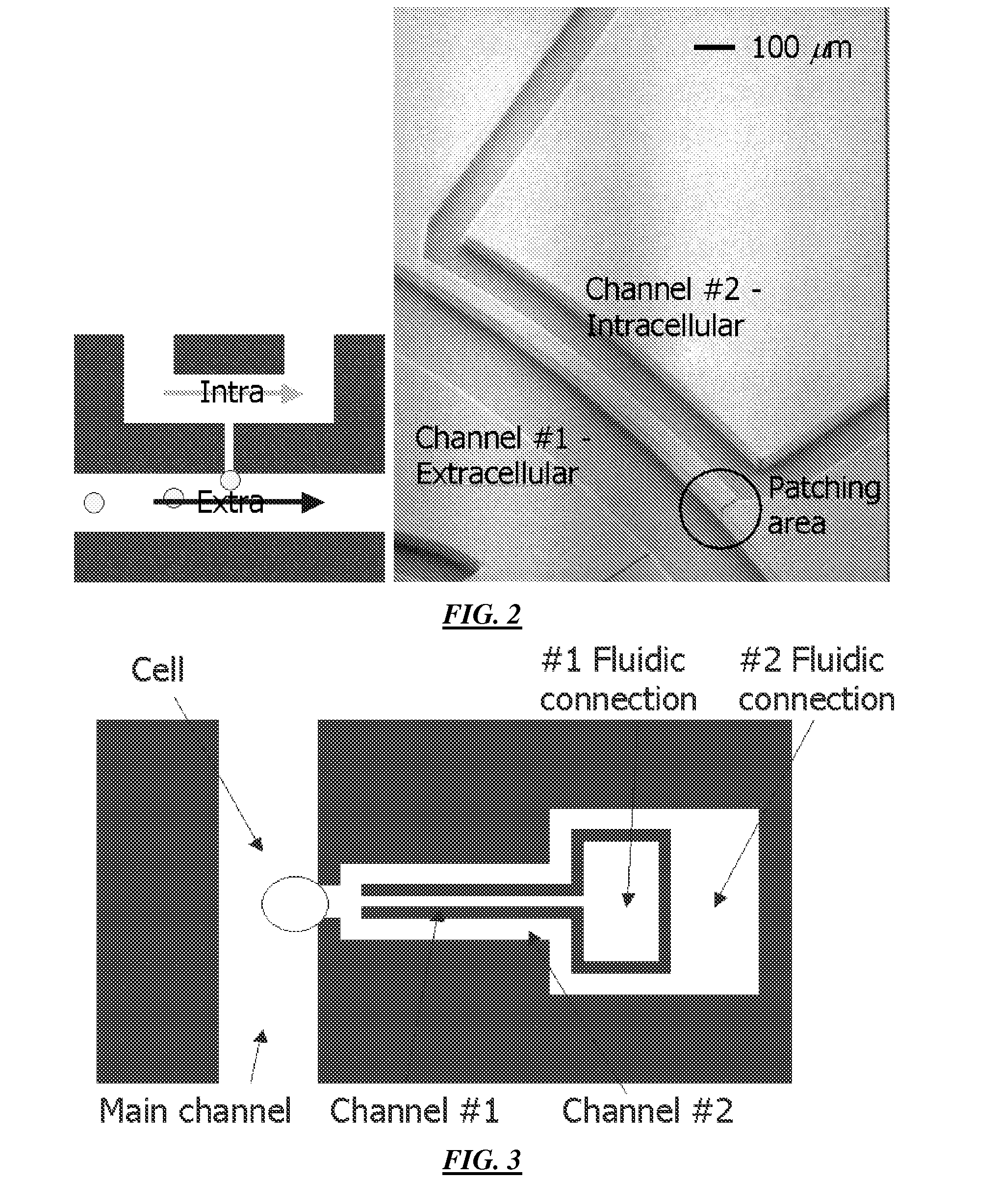Method and apparatus for integrated cell handling and measurements
a technology applied in the field of methods and apparatus for handling and cell, can solve the problems of low control, limited high-resolution methods for manipulating the biochemical nature of a single cell interior, and high cost of mass production of disposable high-throughput biochips, and achieve efficient multiplexing of measurements and high throughput. , the effect of high throughpu
- Summary
- Abstract
- Description
- Claims
- Application Information
AI Technical Summary
Benefits of technology
Problems solved by technology
Method used
Image
Examples
example experimental
Set-Up
[0096] In an example set-up, Ag / AgCl electrodes are connected via tubing to one of the main channels of the chip, and to one or more of the immobilizing channels. These electrodes, which serve both to apply the voltage and record the current, are good recording electrodes because of their minimal electrical double layer (EDL). The other main channel is connected to a syringe for cell loading. The two electrodes are connected to an amplifier (PC-ONE Patch clamp, Dagan) which provides the voltage and measures the current. The amplifier is controlled by a custom-made Labview (National Instruments) application through a data acquisition card (PCI-6024E, National Instruments). The chip is monitored with an inverted microscope (Eclipse TS100, Nikon) with a fluorescent module and is video captured with a camera (DXC-190, Sony) and a video capture card (microVideo DC50, Pinnacle) on the same computer.
[0097] To start the electroporation experiments, all channels in the chip are filled...
example fabrication
6. Example Fabrication
[0104] Systems and devices as described herein can be fabricated using any techniques or methods familiar from the field of photolithography, nano-fabrication, or micro-fluidic fabrication. For completeness of this disclosure and to discuss additional and independent novel aspects according to specific embodiments of the invention, specifics of example fabrication methods are provided below.
[0105] Example fabrication steps according to specific embodiments of the invention are shown diagrammatically in FIG. 13(a-f). In this example, a silicon or other suitable substrate mold is prepared using surface micromachining and / or photolithography techniques. In other examples, any other appropriate material and any other techniques for making a mold could be used.
[0106] In a micromachining example according to specific embodiments of the invention, first, 3.1 μm height patterns are made, defining the narrow cell trapping channels using deep reactive ion etching (FIG....
example alternative
Fabrication Methods
[0111] The following further example fabrication methods are provided for completeness of this disclosure. It will be recognized from these teachings that many alterations can be made to this method to accommodate different materials and / or methods of manufacturing and / or to provide different configurations as otherwise described herein.
[0112] A specific example device according to embodiments of the invention can be fabricated as follows, similarly as described above. First, a mold is prepared using surface micromachining techniques. As an example, first the narrow patch capillaries are made with 3.1 micron high patterns using deep reactive ion etching. Recording capillaries are 20 microns apart, which allows trapping of, for example, 12 cells along a main channel in a volume of 0.36 nL (150×60×40 micron3 for length, width, and height, respectively). Therefore, in the active device area, the reagent dead volume is 30 pL per recording site. Second, 50 micron high...
PUM
| Property | Measurement | Unit |
|---|---|---|
| distance | aaaaa | aaaaa |
| distance | aaaaa | aaaaa |
| voltages | aaaaa | aaaaa |
Abstract
Description
Claims
Application Information
 Login to View More
Login to View More - R&D
- Intellectual Property
- Life Sciences
- Materials
- Tech Scout
- Unparalleled Data Quality
- Higher Quality Content
- 60% Fewer Hallucinations
Browse by: Latest US Patents, China's latest patents, Technical Efficacy Thesaurus, Application Domain, Technology Topic, Popular Technical Reports.
© 2025 PatSnap. All rights reserved.Legal|Privacy policy|Modern Slavery Act Transparency Statement|Sitemap|About US| Contact US: help@patsnap.com



